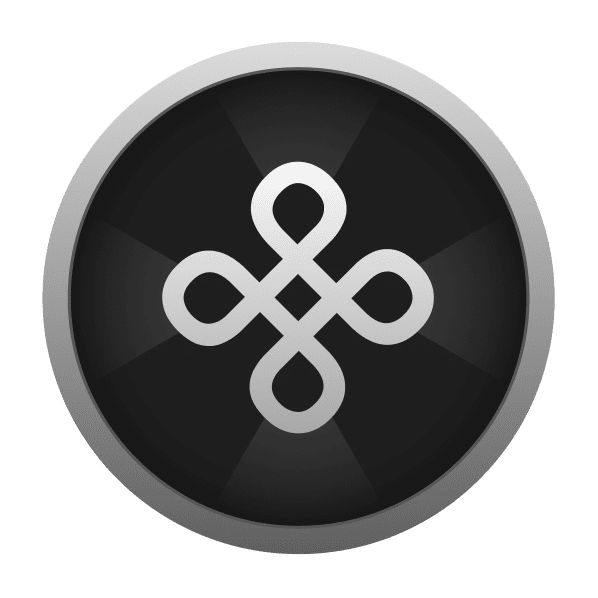Plus Mode
Info
The Plus Mode has 8 Standard Good Ways, each with their own families of ways organized in sets of Indices.
Beta Edition
We apologize for possible inconsistencies, and thanking you for your patience and understanding.
If you find any issues with the content, please feel free to get in touch.
Thank you for your help in making Crisis Resolutions better for everyone.

Good Ways Spectrum
Just as a color palette provides a comprehensive range of colors for an artist to use, the Good Ways Model, on its Plus Edition (Full), provide a comprehensive mapping of all types of good ways, allowing individuals to fully explore the crisis of each possibility. Within these Sets, there are 8 Standard ways that serve as a foundation, and an additional 205 Dependent ways that build off of these Standards, providing a rich and varied landscape of possibilities to explore.
Continence
Personal Good Ways
- through Flexibility of:
- Selfhood
- Childhood
- Parenthood
- Siblinghood
- Spousehood
- through Sensibility of:
- Capacitance
- Charge
- Current
- Resistivity
- Power
- through Sustainability of:
- Infinity
- Intensity
- Density
- Resistance
- Conductivity
- through Accessibility of:
- Probability
- Correlation
- Curvature
- Clustering
- Causality
- through Capability of:
- Potential Action
- Kinetic Action
- Radiant Action
- Thermal Action
- Chemical Action
Conscience
Mental Good Ways
- through Flexibility of:
- Non-Selfhood
- Non-Childhood
- Non-Parenthood
- Non-Siblinghood
- Non-Spousehood
- through Sensibility of:
- Non-Capacitance
- Non-Charge
- Non-Current
- Non-Resistivity
- Non-Power
- through Sustainability of:
- Non-Infinity
- Non-Intensity
- Non-Density
- Non-Resistance
- Non-Conductivity
- through Accessibility of:
- Non-Probability
- Non-Correlation
- Non-Curvature
- Non-Clustering
- Non-Causality
- through Capability of:
- Non-Potential Action
- Non-Kinetic Action
- Non-Radiant Action
- Non-Thermal Action
- Non-Chemical Action
Presence
Practical Good Ways
- through Flexibility of:
- Intuition
- Tensions
- Behaviors
- Relations
- Emotions
- through Sensibility of:
- Purpose
- Honesty
- Generosity
- Consensus
- Love
- through Sustainability of:
- Indefinite Capacity
- Intense Magnitudes
- Dense Coverages
- Resistant Formations
- Conductive Conversions
- through Accessibility of:
- Experience
- Attentiveness
- Intention
- Simulation
- Stimulation
- through Capability of:
- Potential Reaction
- Kinetic Reaction
- Radiant Reaction
- Thermal Reaction
- Chemical Reaction
Sense
Social Good Ways
- through Flexibility of:
- Detachment
- Perfection
- Imagination
- Imperfection
- Memory
- through Sensibility of:
- Hearing
- Touch
- Taste
- Vision
- Smell
- through Sustainability of:
- Capacity
- Magnitude
- Coverage
- Formation
- Convertibility
- through Accessibility of:
- Courage
- Receptiveness
- Altruism
- Truthfulness
- Wisdom
- through Capability of:
- Ethical Conduct
- Ethical Effort
- Ethical Resolve
- Ethical View
- Ethical Livelihood
Absence
Ethical Good Ways
- through Flexibility of:
- Non-Detachment
- Non-Perfection
- Non-Imagination
- Non-Imperfection
- Non-Memory
- through Sensibility of:
- Non-Hearing
- Non-Touch
- Non-Taste
- Non-Vision
- Non-Smell
- through Sustainability of:
- Non-Capacity
- Non-Magnitude
- Non-Coverage
- Non-Formation
- Non-Convertibility
- through Accessibility of:
- Non-Courage
- Non-Receptiveness
- Non-Altruism
- Non-Truthfulness
- Non-Wisdom
- through Capability of:
- Non-Ethical Conduct
- Non-Ethical Effort
- Non-Ethical Resolve
- Non-Ethical View
- Non-Ethical Livelihood
Defense
Mutual Good Ways
- through Flexibility of:
- Character
- Intelligence
- Services
- Community
- Systems
- through Sensibility of:
- Management
- Curation
- Interaction
- Cooperation
- Operation
- through Sustainability of:
- Utility
- Mobility
- Hospitality
- Commodity
- Identity
- through Accessibility of:
- Stasis
- Thesis
- Synthesis
- Hypothesis
- Systasis
- through Capability of:
- Pedagogy
- Research
- Deployment
- Design
- Philosophy
Science
Empirical Good Ways
- through Flexibility of:
- Freedom
- Diversity
- Inclusion
- Fitness
- Party
- Wellbeing
- through Sensibility of:
- Input Feedback
- Indexing Evaluation
- Output Feedback
- Modeling Classification
- Compatibility Testing
- Memory Allocation
- through Sustainability of:
- Economic Liberty
- Ecophysiological Equality
- Ecological Solidarity
- Ecospheric Peace
- Ecotypic Order
- Ecosystemic Governance
- through Accessibility of:
- Levels Empowerment
- Topics Support
- Recipes Composition
- Journals Documentation
- Challenges Adaptation
- Rituals Coexistence
- through Capability of:
- Self-Reflection Genesis
- Sentience Practice
- Self-Autonomy Mimesis
- Simplicity Growth
- Symmetry Investigation
- Variety Inheritance
Essence
Vital Good Ways
- through Flexibility of:
- Origin
- Crisis
- Resolutions
- Journey
- Unity
- through Sensibility of:
- Model
- Events
- Model Events
- Model Behaviors
- Structure
- through Sustainability of:
- Home
- Hello
- Help
- Habits
- Habitats
- through Accessibility of:
- Galleries
- Lists
- Tables
- Boards
- Calendars
- through Capability of:
- Strategy Layer
- Application Layer
- Business Layer
- Technology Layer
- Implementation Layer
